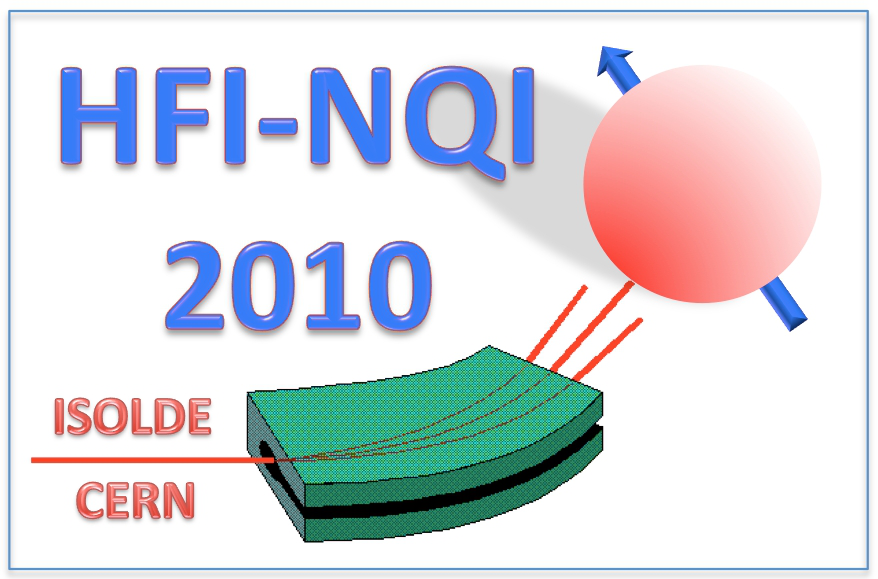Speaker
Mr
Riccardo Valentini
(HISKP der Universität Bonn)
Description
For optoelectronic devices semiconductors with large band gap doped with rare earth are used. Doping is generally performed during growth but for more structured doping the ion implantation technique is preferable. The perturbed angular correlation technique is an ideal tool to study the annealing behavior of semiconductors after implantation. Usually, this method is only able to measure the absolute value but not the sign of the electrical field gradient (EFG) acting onto the quadrupole moment of the implanted probe. An adequate rare earth isotope for such investigations of semiconductors is 172Yb.
The temperature dependence of the hyperfine fields for 172Lu(172Yb) in GaN has been analyzed. The total EFG at the site of this probe is a superposition of the lattice EFG due to the GaN wurtzite structure and the EFG due to the 4f-shell of the rare earth probe itself. The latter is strongly temperature dependent and opposed to the lattice EFG which in contrast is nearly constant since the lattice parameters change only negligibly with temperature.
At elevated temperatures all crystal field split levels of the 4f-shell are equally populated. But at low temperatures the lowest level is occupied preferentially. Sign and magnitude of the EFG produced by the 4f shell can be calculated. Depending on which of the levels is lowest in energy it was possible to determine the sign of the lattice field gradient.
| Are you a student, a delegate from developing countries or a participant with physical needs and would like to apply for a sponsored accomodation. Please answer with yes or no. | yes |
|---|
Author
Mr
Riccardo Valentini
(HISKP der Universität Bonn)
Co-author
Dr
Reiner Vianden
(HISKP der Universität Bonn)
